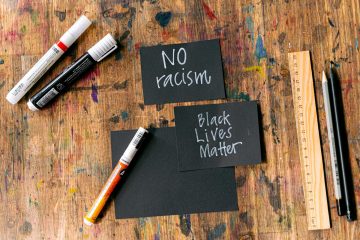Anti-Black racism is a cancer in our society. Racism, and particularly anti-Black racism, is endemic in modern Canadian society and must be fought, conquered, and destroyed. “As Mandela said: No one is born hating another person because of the colour of his skin, or his background, or his religion. People must learn to hate, and ...
Equity/Anti-Black Racism

4 July 2025 In Articles, Equity/Anti-Black Racism By noel
Anti Racism
Anti-Black racism is a cancer in our society. Racism, and particularly anti-Black racism, is endemic in modern Canadian society and must be fought, conquered, and destroyed. "As Mandela said: No one is born hating another person because of the colour of his skin, or his background, or his religion. People must learn to hate, and ...
4 July 2025 In Equity/Anti-Black Racism, Issues & Opportunities, Social Justice By noel
Ayanna Pressley Introduces Sweeping Criminal Justice Reform Resolution
Rep. Ayanna Pressley (D-Mass), unveiled a sweeping criminal justice reform resolution on Thursday that could begin dismantling a racist system that disproportionately targets, incarcerates, and kills members of Black, Latinx, and Indigenous communities. The United States, a nation addicted to punishment and cages, is the number one jailer in the world, something that Pressley is ...
4 July 2025 In Articles, Education, Equity/Anti-Black Racism By noel
Ontario Appoints Investigator to Examine PDSB’s Contravention of Ministerial Directions
Following the release of a damning report of systemic anti-Black racism within the Peel District School Board (PDSB), Ontario’s Education Minister Stephen Lecce issued 27 directives on March 13, 2020, to be implemented by the organization under strict timelines. In a news release, the Ministry of Education stated that these directives to the PDSB are ...
4 July 2025 In Articles, Equity/Anti-Black Racism, Our Health By noel
Canada’s lack of race-based COVID-19 data hurting Black Canadians
Canada’s Lack of Race-Based COVID-19 Data Is Hurting Black Canadians: Experts By Olivia Bowden – Global News Rachel, a frontline worker in social services in the Greater Toronto Area, juggles multiple jobs. After a long day, she returns home to her children. That evening, she learns that a resident at her facility has been hospitalized ...
4 July 2025 In Articles, Equity/Anti-Black Racism, Our Health By noel
Ontario To Start Collecting Race-Based Data From COVID-19 Patients
After months of pressure from Black community advocates and health experts, Ontario announced it will soon begin collecting race-based and socioeconomic data on COVID-19. Chief Medical Officer Dr. David Williams said the province is consulting with health equity experts to determine what information to collect. So far, no further details have been provided. However, Ontario ...
4 July 2025 In Articles, Criminal Justice, Equity/Anti-Black Racism, Social Justice By noel
Toronto Police Accused Of Pushing Black Woman From 24th Floor Balcony
Toronto police are being accused of pushing a Black woman off an apartment balcony to her death in the city’s High Park neighbourhood. The incident took place on Wednesday, May 27, at around 5:15 pm. The Special Investigations Unit (SIU) said Toronto police responded to a "domestic incident" at an apartment building on High Park ...
4 July 2025 In Articles, Criminal Justice, Equity/Anti-Black Racism By noel
Statement On The Death of Regis From The Korchinski-Paquet Family
May 28, 2020 STATEMENT ON THE DEATH OF REGIS FROM THE KORCHINSKI-PAQUET FAMILY On Wednesday May 27, 2020 at approximately 5:00 pm a 911 call was made by a concerned mother, Claudette Beals-Clayton, for the safety and well-being of her child Regis Korchinski-Paquet. Regis was in distress over a family conflict and her mother sought ...
4 July 2025 In Articles, Criminal Justice, Equity/Anti-Black Racism, Social Justice By noel
Toronto Police Chief Addresses Death Of Regis Korchinski-Paquet
Police chief Mark Saunders is calling for calm amid allegations of foul play in the death of Regis Korchinski-Paquet, who fell to her death from a 24th-floor apartment balcony during an interaction with Toronto police. He revealed that dispatch received three individual 911 calls regarding an assault at 100 High Park on Wednesday evening, two ...
4 July 2025 In Articles, Education, Equity/Anti-Black Racism By noel
Ottawa Woman Circulates Video Appearing To Mock George Floyd’s Death Online
Meanwhile in Canada, an Ottawa woman identified as Shania Lavallee reportedly circulated a Snapchat video online that appeared to mock George Floyd’s death. Shania reportedly shared the video of her sister Justine Lavallee, who is a Program Officer at the Canada Border Services Agency (CBSA), and Justine’s boyfriend, Gilmour Maurice Driscoll, who seemed to be ...
